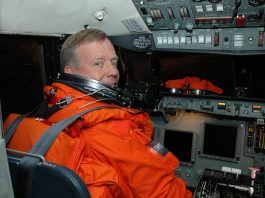Researchers at Julius-Maximilians-Universität of Würzburg are training Artificial Intelligence on a satellite to discover anomalies in space.
Sometimes, circular holes previously unseen on the surface of Mars became visible; geysers were discovered on Saturn’s moon; and structures that look like fossilised worms were found on the images sent to Earth by Curiosity, the Mars rover.
These phenomena, some of which appear to be temporary, were discovered by chance. “Artificial intelligence technologies would make it much easier to detect previously unknown anomalies,” said Hakan Kayal, Professor of Space Technology at Julius-Maximilians-Universität of Würzburg (JMU) in Bavaria, Germany.
According to Kayal, using AI in astronautics is still in its infancy: “There are only a handful of projects on this.”
In order to use AI to detect unknown phenomena in space, it must be trained; it must be ‘fed’ with the known so it can learn to recognise the unknown.
The professor explained: “There are already satellites that are run with AI. Their AI is trained on Earth and then sent into orbit. However, we have other plans: We want to train the AI on board of a small satellite under space conditions.
“Miniaturised IT systems are becoming more and more powerful. And we take our time for AI training. So a learning process in orbit can take several days.”
Going forward, Kayal wants to use small satellites with AI to monitor not only Earth, but to undertake interplanetary missions, discover new extra-terrestrial phenomena, and potentially even traces of extra-terrestrial intelligence.
“As soon as you go interplanetary, communication with the satellite becomes a bottleneck,” explained the professor. With increasing distance from Earth, data transfer takes longer, “you cannot keep sending data back and forth. That is why the AI must be able to learn independently on the satellite. And it must only report relevant discoveries to Earth.”
Kayal’s team will employ this technology on the satellite SONATE-2 and test it in orbit. The Federal Ministry for Economic Affairs and Energy is funding the project, which began on 1 March 2021, with 2.6 million euros. In a mission intended to last one year, the satellite is due to be launched into orbit in spring 2024.









